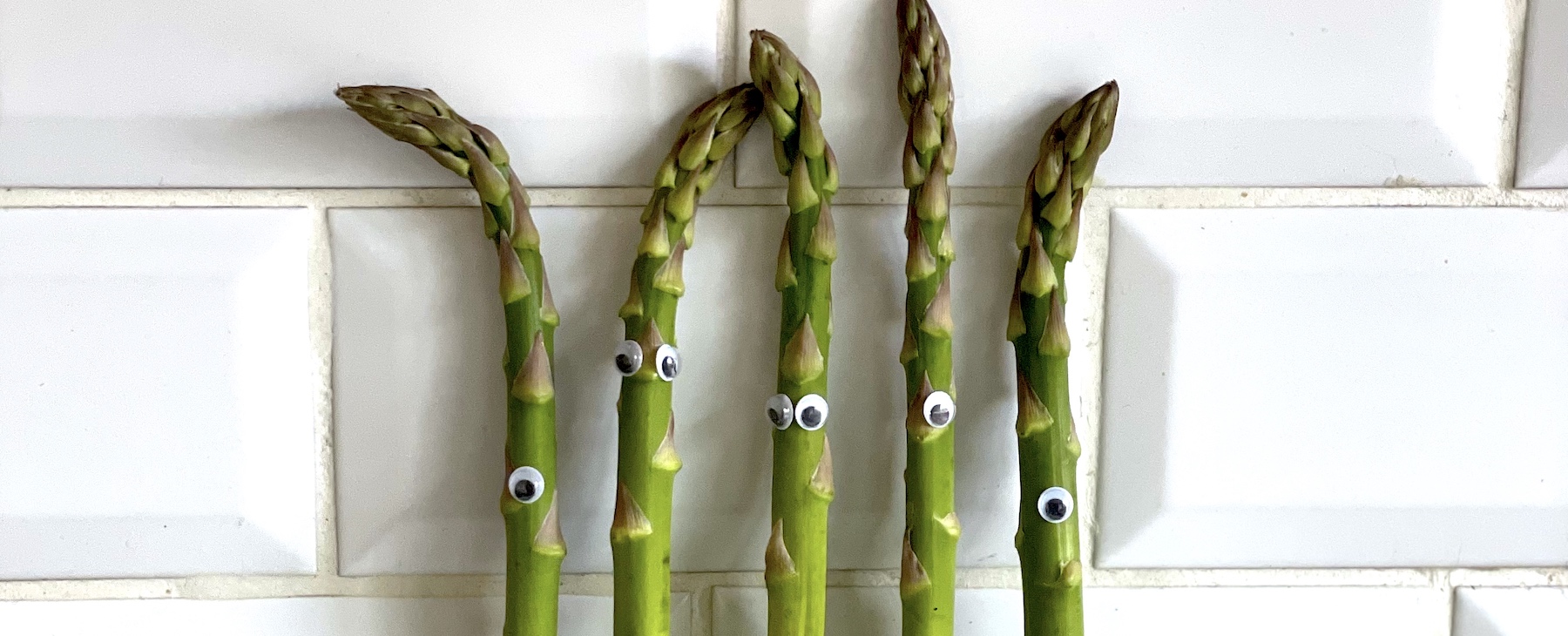What Actually Is Asparagus?!
The History Of Asparagus
Asparagus has a long history that dates back to ancient Greece and Rome as far as the first century! Named after the Persian word ‘asparag’ which means shoot, which then developed into sperage, then sparagus from its folk name ‘sparrow grass’ and finally asparagus when it became cultivated in the US in the 19th century.
How To Store and Prepare Asparagus
Asparagus, once trimmed can be stored in gastro trays to keep the spears fresh for around 4 days and leaving the elastic band on is key. An asparagus bunch can also be kept wrapped in a damp paper towel in the vegetable section of the fridge. Either way make sure to rotate stock, using up the oldest first to avoid stock loss.
Asparagus has a great distinct taste so with that said, the key to preparation is simplicity. Some great herbs for seasoning asparagus are chives, dill, tarragon and lemon balm. Adding these herbs to some liquefied butter and using it to sauté is a favourite way to prepare asparagus. Many other great ways of preparing asparagus are steamed, pickled, roasted, stir-fried or grilled with salt, pepper and olive oil.
Nutritional Benefits Of Asparagus
Asparagus Consumption In The UK
Asparagus was once thought of as a posh vegetable, but wider consumer demand has soared over the year, and farmers have more than trebled the amount they grow. In the period between 2004 and 2014 the demand for asparagus in the UK grew by almost 540%. In 2019 it was reported that Europe had the fastest-growing market for asparagus with a total of 121,229.0 metric tons of asparagus imported.
Seasonality Of Asparagus
They say the green spears of asparagus are the first signs of spring! Asparagus is typically a spring vegetable and its UK season runs from late April to mid-June. When ripe the tips should be tightly furled and perky, rather than limp, and the shoots should be straight and firm.
How And Where Does Asparagus Grow?
Asparagus are perennial plants meaning they grow back year after year. It originates from maritime habitats. They grow from thick underground roots attached to a stem called rhizome which has smaller roots that absorb nutrients and water. The roots and rhizome are commonly referred to as crowns.
Some refer to asparagus the Usian Bolt of the vegetable world due to its speed of growth! Asparagus can grow up to 10cm in a single day and its roots can grow up to 10 feet so long as the soil has moisture and nutrients.
Usually from the end of April we take stock of our first delivery of wonderful English asparagus thanks to our growers such as Redstar Growers in Worcestershire. English asparagus is usually available for 5-6 weeks, after which point we move back to supplies from overseas.
Harvesting Asparagus
Planting an asparagus patch is a labour of love and requires a lot of patience as it takes 2-3 years before a farmer can begin to harvest the spears. If harvested prematurely, the roots will not have formed solid enough foundations to be able to produce more spears for the years to come.
In the first few seasons, the asparagus patch will only produce spears for about two weeks, but in the following seasons patches can produce spears for as long as eight weeks and generally produce for about 8-12 seasons, but on rare occasions can produce for up to 30 years.
Asparagus spears are harvested by snipping them at the bottom when they reach about 8 inches long. It’s best to leave thinner spears to mature, thicker spears on the other hand must be harvested fairly quickly. But if a spear starts too form foliage, it’s too late to harvest.
If the diameter of the spears becomes less than an average pencil, it is a sign that the plant’s roots need time to rejuvenate. In this case, allowing the spear to produce foliage will revitalise the roots, preparing them for the next season.
Types Of Asparagus
Asparagus Varieties
Green asparagus – aka ‘British asparagus’ is the most common variety, but there are also white, pink and purple varieties. French asparagus is purple, whilst the British and American varieties are green. Similarly to cabbage, the Dutch variety of asparagus is white as it’s grown completely underground, so never develops chlorophyll which is a colour-producing pigment. Asparagus turns green as it’s exposed to sunlight and the pink/purple varieties contain the pigment anthocyanin.
British Green Asparagus
Wild Asparagus
White Asparagus
Samphire – Sea Asparagus
Purple Asparagus
Our Asparagus
You can see some of the asparagus varieties we stock when available. Please contact our team to discuss your requirements, or login to our online ordering or app to order.
Menu Inspiration! Asparagus Recipes
Here’s some of our tasty recipe suggestions incorporating asparagus into your dishes.
Soft Boiled Hens Egg, Woodalls Air-Dried Ham Wrapped Asparagus & Parmesan Ciabatta Soldiers
Halibut, British Asparagus, Pea Mousse & Herb Oil
Szechuan Beef, Slow Cooked Beef Daube Finished With Udon Noodles, Spring Greens & Asparagus
Join Our Mailing List
By signing up to Oliver Kay e-mails, you confirm that you’re aware your personal data will be used in line with our Terms and Conditions and our Privacy Policy.


